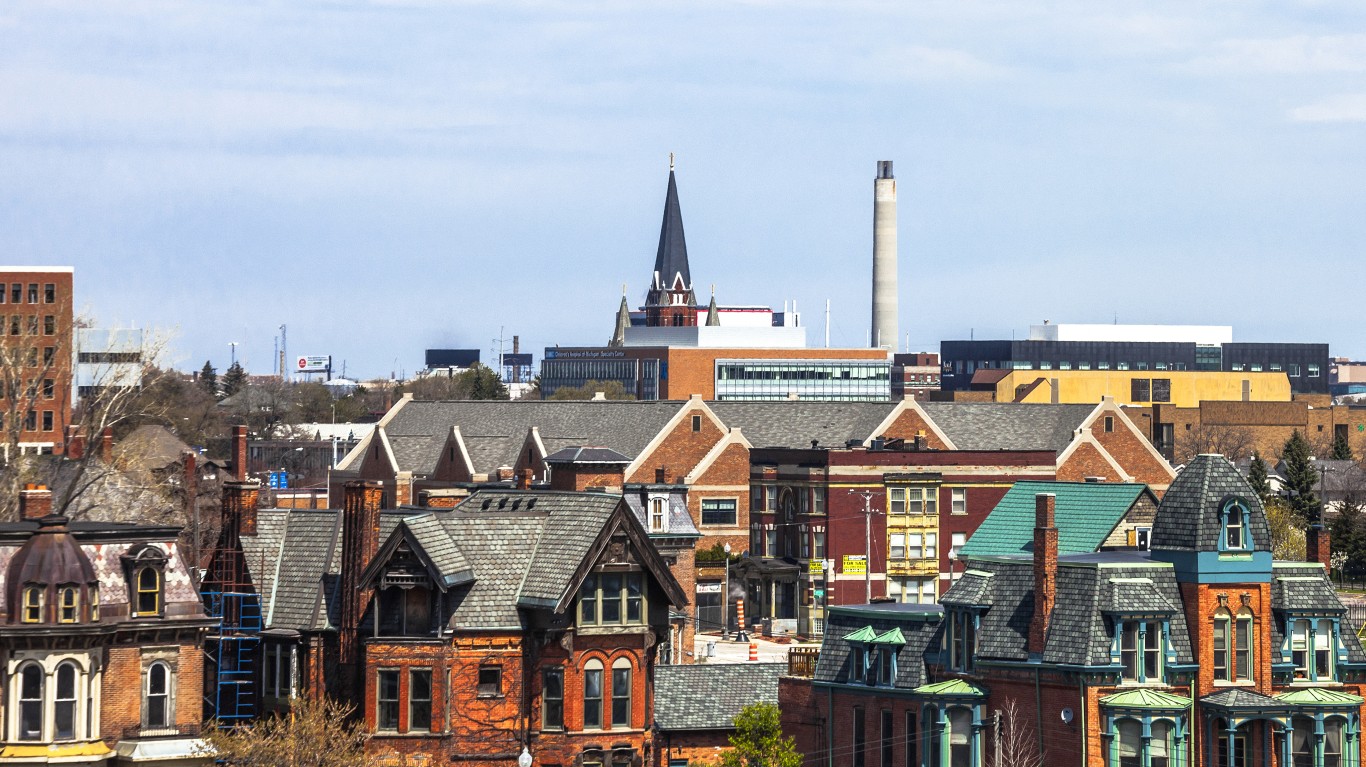
Despite slow sales, the value of homes in America has risen recently. Mortgage rates at nearly 8% have held buyers back. Low home inventory has pushed prices up and curtailed selling. Low inventory is winning the tug-of-war over the value of the housing market. One thing that has not changed for decades is that some home markets are cheaper than others. Local economic conditions usually drive this, as America’s cheapest housing market demonstrates. (You can buy most homes in these cities for under $125,000.)
The latest S&P Case Shiller home price index shows that, in August, home prices rose 0.4% from July and 2.6% from the year before. Craig J. Lazzara, managing director at S&P
DJI, commented that the increase “marks the seventh consecutive monthly gain since prices bottomed in January 2023.”
America’s Priciest and Cheapest Housing Markets
Case Shiller also looks at prices in 20 large housing markets. This measurement goes back to January 2000. That month, the agency assigned an index reading of 100 to each of the 20 markets it measures. Researchers point out that a market with an index of 150 has seen home prices rise by 50%.
Some markets have had extraordinary growth in prices. Most are on the West Coast and are probably driven by the tech boom. San Diego has an index of 419.08. In Los Angeles and San Francisco, they are 417.73 and 349.83, respectively.
At the far end of the home value increase list is Detroit, with a score of 180.80. Over 23 years, prices have only risen about 80%. That compares to the national figure of 311.50. (These seven major American cities have lost over half their populations.)
Detroit is America’s most downtrodden large city. Its population in 2000 was 951,270. Last year, that dropped to 620,376. The median household income in the city is $34,762, which is about half the national number. The poverty rate is 31.8%, nearly triple the national future. This affirms that home prices are tied to local demographics.
Take Charge of Your Retirement In Just A Few Minutes (Sponsor)
Retirement planning doesn’t have to feel overwhelming. The key is finding expert guidance—and SmartAsset’s simple quiz makes it easier than ever for you to connect with a vetted financial advisor.
Here’s how it works:
- Answer a Few Simple Questions. Tell us a bit about your goals and preferences—it only takes a few minutes!
- Get Matched with Vetted Advisors Our smart tool matches you with up to three pre-screened, vetted advisors who serve your area and are held to a fiduciary standard to act in your best interests. Click here to begin
- Choose Your Fit Review their profiles, schedule an introductory call (or meet in person), and select the advisor who feel is right for you.
Why wait? Start building the retirement you’ve always dreamed of. Click here to get started today!
Thank you for reading! Have some feedback for us?
Contact the 24/7 Wall St. editorial team.
